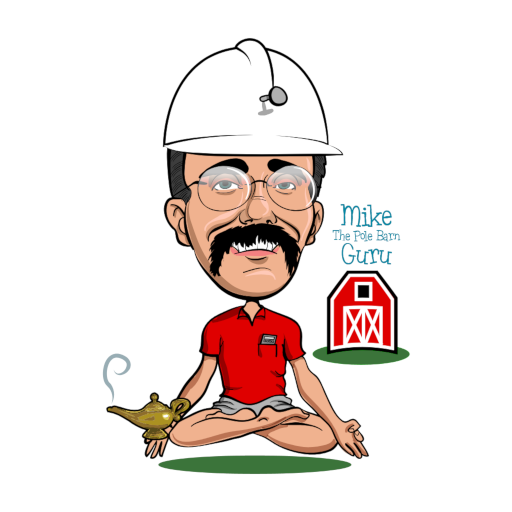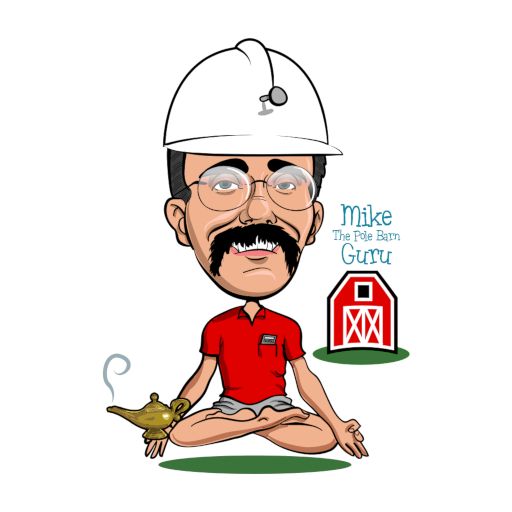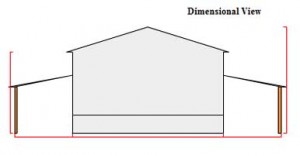Hansen Pole Buildings Designer Bob always is keeping me on my toes. He loves to propose topics for blog discussion.
Today it started with:
“Real rough blog topic idea…
What’s the difference between this pole barn with side sheds and a B2 Bomber?”
“In this case… not much.
After a couple laughs, the client seems to like this better:”
Where Bob was headed with this:
“Maybe a blog on side sheds with mention of open overhangs v. enclosed and the whole bird-nesting issue v. matching overhangs of the rest of the structure, etc.”
Nothing like be armed with topics for weeks’ worth of blogs.
Let’s talk about what happens with overhangs on the low side of open side sheds. The same issue is going to happen with overhangs on the sides of roofline (carport) extensions of the ends of buildings. It is also going to come up with roof only structures.
Putting no overhangs, or open overhangs on the sidewalls of any of these cases creates no unexpected issues.
What about enclosed overhangs?
An enclosed overhang is one which has a soffit of some sort on the underside. Looks? Great – it covers the underside of all of the framing which is needed to support the overhang. With soffit material like vented vinyl, they provide a very efficient and effective method to provide a ventilation intake for the building.
The soffit keeps flying critters (sparrows, wasps, etc.) from nesting in the overhangs…..until the enclosed overhangs are placed on a structure where the flying things can enter the overhangs from the inside. In order to keep Rocket J. Squirrel or his friends out of the soffit, it entails having to place protective screening on the inside of the overhang.
My best recommendation – for side sheds with the eave side open, or roof only structures, do not place enclosed overhangs along the sidewall. For carports, generally the balance of the building has enclosed overhangs, so screening is the solution.









